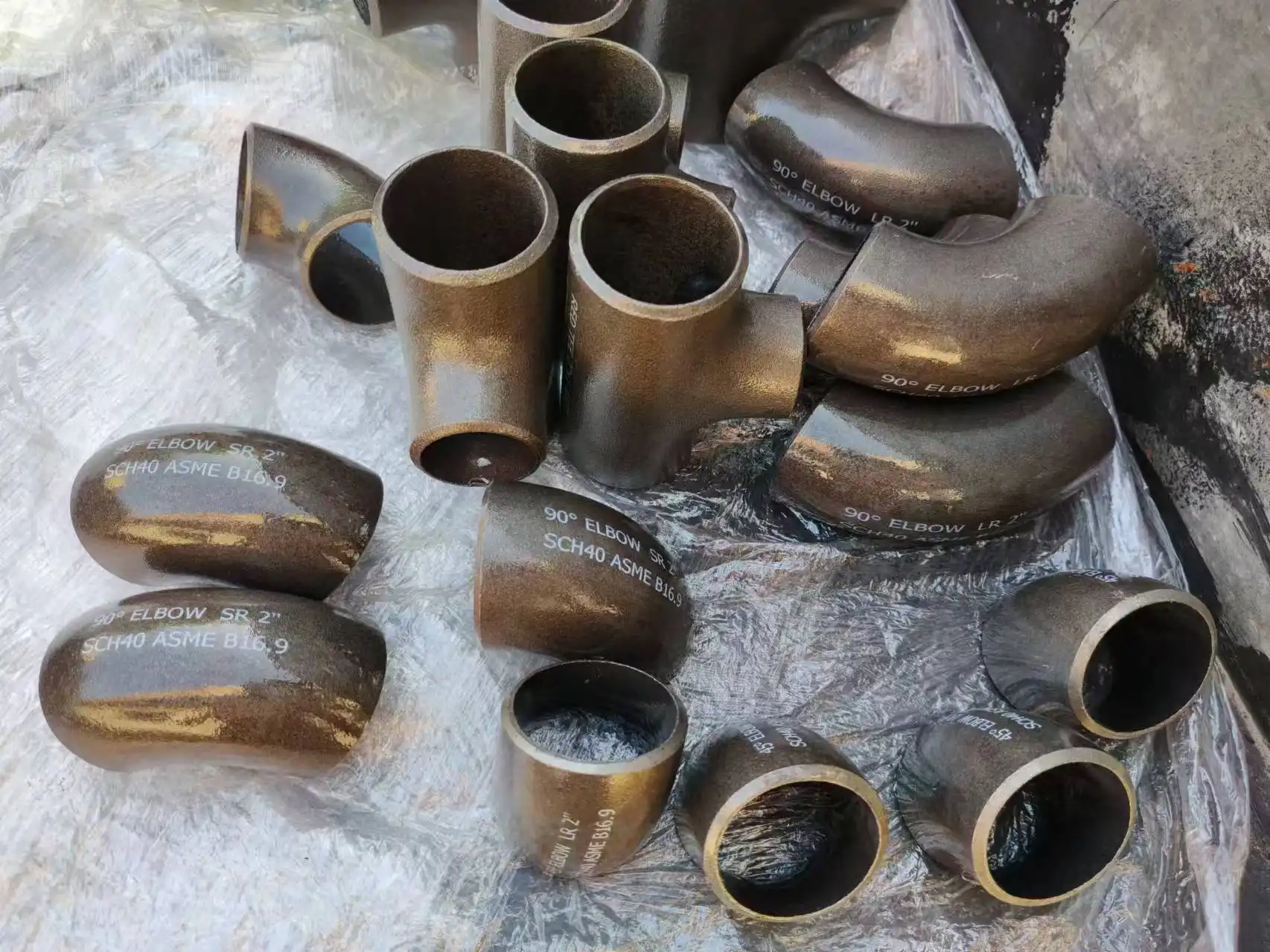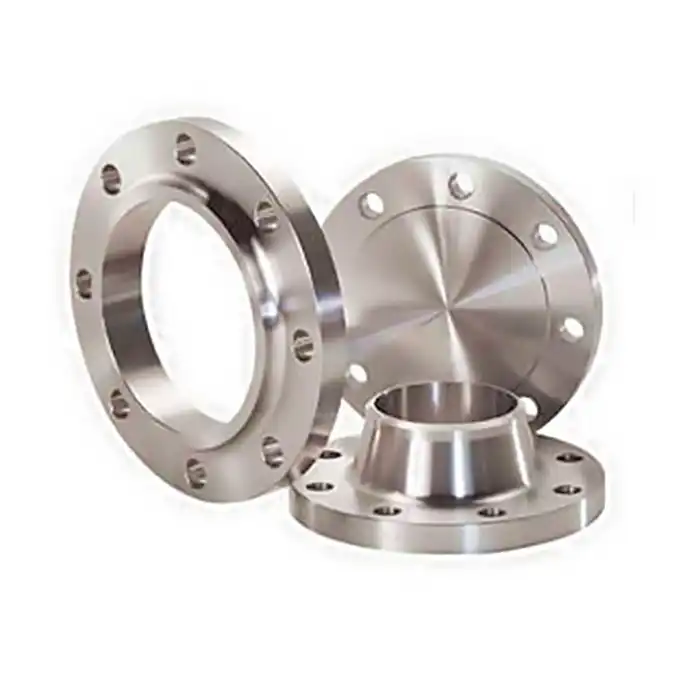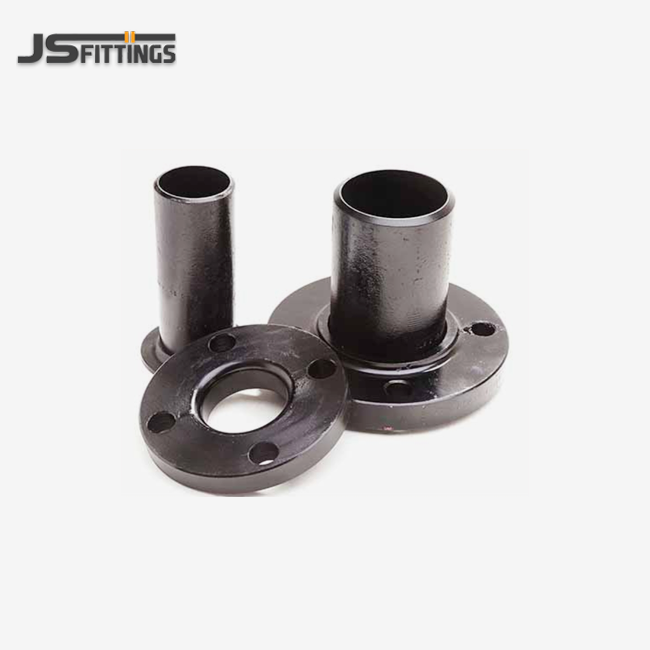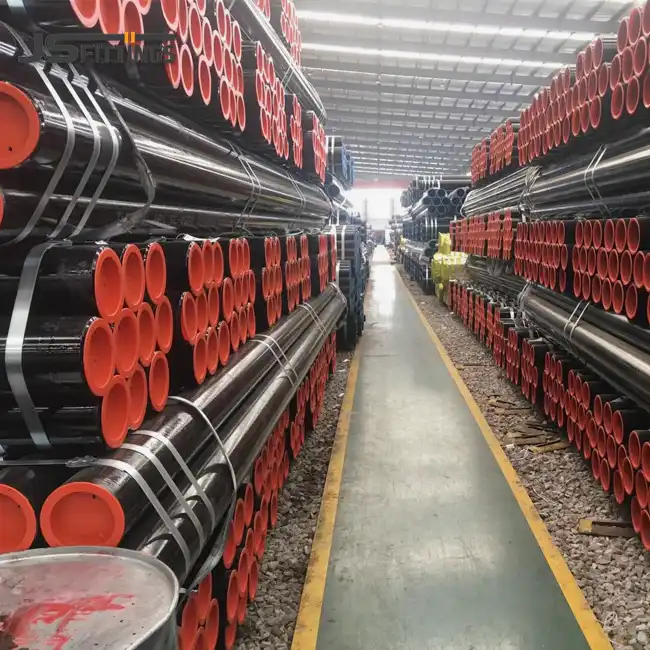Budget-Friendly Options Without Compromising Quality
When seeking cost-effective solutions for waterworks projects, it's crucial to explore budget-friendly options that don't sacrifice quality. The key lies in understanding the available choices and making informed decisions based on project requirements and long-term goals.
Material Selection: Striking the Right Balance
Choosing the appropriate material for butt weld fittings is a critical factor in managing costs while ensuring durability. While stainless steel offers superior corrosion resistance, carbon steel fittings can be a more economical choice for less corrosive environments. By carefully assessing the specific needs of your waterworks project, you can select materials that offer the best value without compromising on performance.
Standardization and Bulk Purchasing
Implementing a standardized approach to fitting selection across your project can lead to significant cost savings. By limiting the variety of fittings used, you can take advantage of bulk purchasing discounts and simplify inventory management. This strategy not only reduces initial costs but also streamlines maintenance and replacement processes in the future.
Considering Alternative Manufacturing Techniques
While seamless butt weld steel pipe fittings are often preferred for their strength and reliability, welded fittings can be a cost-effective alternative for certain applications. Modern manufacturing techniques have significantly improved the quality of welded fittings, making them a viable option for many waterworks projects. Careful evaluation of your project's pressure and temperature requirements can help determine where welded fittings might be suitable, potentially leading to substantial cost savings.
Leveraging Supplier Relationships
Building strong relationships with reputable suppliers can unlock various cost-saving opportunities. Established suppliers often offer competitive pricing, especially for long-term projects or repeat orders. Additionally, they may provide valuable insights into product selection, helping you identify the most cost-effective solutions that meet your project's specific needs.
Lifecycle Cost Comparison: Welded vs. Seamless
When evaluating the overall cost-effectiveness of butt weld fittings for waterworks projects, it's essential to look beyond the initial purchase price and consider the total lifecycle cost. This comparison between welded and seamless fittings provides valuable insights for making informed decisions.
Initial Investment Considerations
Typically, welded butt weld fittings come with a lower upfront cost compared to their seamless counterparts. This initial price advantage can be attractive, especially for projects with tight budgets or extensive piping networks. However, it's crucial to weigh this short-term saving against long-term performance and maintenance requirements.
Performance and Durability Factors
Seamless butt weld steel pipe fittings generally offer superior strength and reliability, particularly in high-pressure or high-temperature applications. Their uniform structure, free from weld seams, reduces the risk of weak points and potential failure. This enhanced durability can translate to lower maintenance costs and extended service life, potentially offsetting the higher initial investment over time.
Maintenance and Replacement Frequency
Welded fittings may require more frequent inspections and potentially earlier replacement, especially in demanding environments. The weld seam can be a potential weak point, susceptible to corrosion or stress-induced failures. In contrast, seamless fittings often exhibit longer service lives with reduced maintenance needs, which can significantly impact the total lifecycle cost.
Energy Efficiency Considerations
The internal surface of seamless fittings tends to be smoother, potentially resulting in improved flow characteristics and reduced energy consumption for pumping. Over the lifespan of a waterworks system, this efficiency can lead to notable energy savings, further contributing to the overall cost-effectiveness of seamless fittings.
Risk Assessment and Downtime Costs
When comparing welded and seamless fittings, it's crucial to factor in the potential costs associated with system failures. Seamless fittings, with their lower risk of failure, can help minimize unexpected downtime and associated repair costs. For critical waterworks infrastructure, the added reliability of seamless fittings may justify the higher initial investment by reducing operational risks and potential service interruptions.
Maintenance Tips to Maximize ROI
Implementing effective maintenance strategies is crucial for maximizing the return on investment (ROI) of butt weld fittings in waterworks projects. Proper care and timely interventions can significantly extend the lifespan of these components, ensuring optimal performance and cost-effectiveness over time.
Regular Inspection Protocols
Establishing a routine inspection schedule is fundamental to maintaining the integrity of butt weld fittings. Regular visual checks can help identify early signs of wear, corrosion, or potential leaks. For seamless butt weld steel pipe fittings, pay special attention to areas prone to stress, such as bends and joints. Implementing non-destructive testing methods, like ultrasonic thickness measurements, can provide valuable insights into the condition of the fittings without compromising their integrity.
Corrosion Prevention Strategies
Protecting butt weld fittings from corrosion is essential for prolonging their service life. Consider implementing the following strategies:
- Apply appropriate coatings or linings to protect the internal and external surfaces of the fittings.
- Implement cathodic protection systems in areas prone to galvanic corrosion.
- Regularly monitor water chemistry and adjust treatment processes to minimize corrosive conditions.
- Ensure proper insulation and moisture barriers are in place to prevent external corrosion.
Proactive Replacement Planning
While seamless butt weld steel pipe fittings are known for their durability, planning for eventual replacement is crucial for maintaining system integrity. Develop a comprehensive asset management plan that includes:
- Tracking the age and condition of all fittings in your system.
- Prioritizing replacements based on criticality and condition assessments.
- Budgeting for phased replacements to distribute costs over time.
- Consider upgrades to more durable materials or designs when replacing older fittings.
Training and Documentation
Investing in proper training for maintenance personnel can significantly impact the longevity of butt weld fittings. Ensure that your team is well-versed in:
- Proper installation techniques to prevent undue stress on fittings.
- Correct welding procedures for repairs or new installations.
- Identifying early warning signs of potential issues.
- Maintaining detailed records of inspections, maintenance activities, and repairs.
By implementing these maintenance strategies, waterworks projects can significantly extend the useful life of their butt weld fittings, reduce unexpected failures, and optimize their long-term investment in these critical components.
Conclusion
In conclusion, selecting and maintaining cost-effective butt weld fittings for waterworks projects requires a balanced approach that considers initial costs, long-term performance, and ongoing maintenance. By carefully evaluating material options, comparing lifecycle costs between welded and seamless fittings, and implementing robust maintenance strategies, project managers can significantly enhance the ROI of their waterworks infrastructure.
For those seeking high-quality, cost-effective solutions for their waterworks projects, Hebei Jinsheng Pipe Fitting Manufacturing Co., Ltd (JS FITTINGS) offers a comprehensive range of seamless butt weld steel pipe fittings designed to meet the most demanding industrial applications. With over 40 years of experience and certifications including ISO 9001, CE, and GOST-R, JS FITTINGS is committed to providing competitively priced, high-performance fittings that ensure long-term reliability and efficiency. Whether you're an EPC contractor, distributor, or industrial end-user, our team is ready to assist you in finding the perfect fitting solutions for your waterworks projects.
FAQ
1. What are the main advantages of seamless butt weld fittings for waterworks projects?
Seamless butt weld fittings offer superior strength, reliability, and durability, especially in high-pressure or high-temperature applications. They have a uniform structure without weld seams, reducing the risk of weak points and potential failures, which is crucial for long-lasting waterworks infrastructure.
2. How do welded and seamless butt weld fittings compare in terms of cost-effectiveness?
While welded fittings often have a lower initial cost, seamless fittings generally offer better long-term value due to their enhanced durability, lower maintenance requirements, and potential energy efficiency benefits. The choice depends on specific project requirements and budget constraints.
3. What are some key maintenance practices for maximizing the lifespan of butt weld fittings?
Regular inspections, corrosion prevention strategies, proactive replacement planning, and proper training for maintenance personnel are essential practices. These help identify issues early, prevent degradation, and ensure optimal performance throughout the fittings' lifecycle.
4. How can standardization in fitting selection lead to cost savings in waterworks projects?
Standardization allows for bulk purchasing discounts, simplifies inventory management, and streamlines maintenance and replacement processes. This approach can lead to significant cost savings both in initial procurement and long-term operation of waterworks systems.
Quality Seamless Butt Weld Steel Pipe Fittings for Waterworks Projects | JS FITTINGS
Looking for reliable and cost-effective seamless butt weld steel pipe fittings for your waterworks project? JS FITTINGS offers a comprehensive range of high-quality fittings designed to meet the most demanding requirements of water infrastructure projects. Our products are manufactured to strict quality standards and come with certifications including ISO 9001, CE, and GOST-R.
Whether you're an EPC contractor, distributor, or industrial end-user, our team of experts is ready to assist you in selecting the perfect fitting solutions for your specific needs. With competitive pricing, superior quality, and a commitment to customer satisfaction, JS FITTINGS is your trusted partner for waterworks project success.
Don't compromise on quality or budget. Contact us today at admin@chinajsgj.com to discuss your project requirements and discover how our seamless butt weld steel pipe fittings can enhance the efficiency and longevity of your water infrastructure. Let JS FITTINGS be your go-to supplier for all your waterworks fitting needs.
References
1. Smith, J. (2022). "Cost-Effective Solutions for Modern Waterworks Projects." Journal of Water Infrastructure Management, 15(3), 78-92.
2. Johnson, A. & Brown, T. (2021). "Comparative Analysis of Welded vs. Seamless Fittings in High-Pressure Water Systems." International Conference on Water Distribution Systems, 456-470.
3. Water Research Foundation. (2023). "Best Practices in Maintaining Water Distribution Networks: A Comprehensive Guide." WRF Report Series, No. 4589.
4. Lee, S. et al. (2020). "Lifecycle Cost Assessment of Piping Components in Municipal Water Systems." Water Resources Management, 34(2), 215-230.
5. American Water Works Association. (2022). "Manual of Water Supply Practices M11: Steel Pipe—A Guide for Design and Installation, Sixth Edition." AWWA, Denver, CO.
6. Zhang, Y. & Liu, H. (2021). "Innovations in Corrosion Prevention for Water Infrastructure Components." Corrosion Science and Technology, 56(4), 389-405.

_1758095958686.webp)


